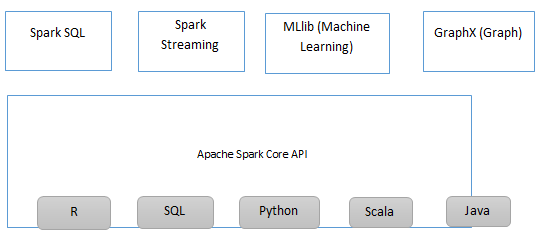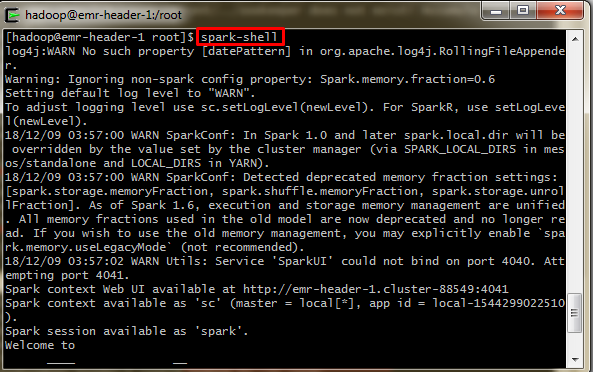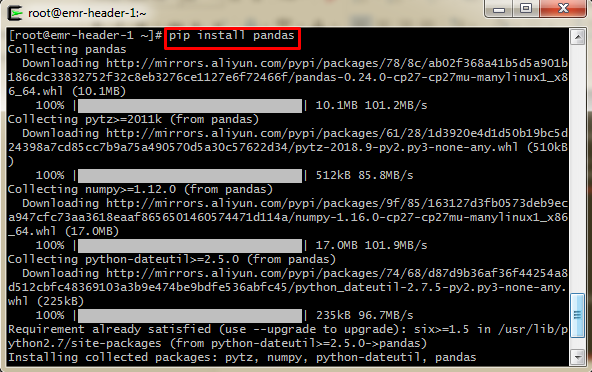By Priyankaa Arunachalam, Alibaba Cloud Tech Share Author. Tech Share is Alibaba Cloud's incentive program to encourage the sharing of technical knowledge and best practices within the cloud community.
We have already introduced you to Hadoop and clusters in our previous article. At this point, you may be wondering why we need a multi-node cluster. Since most of the services will be running on the master, why don't we just create a single-node cluster instead? There are two main reasons for using a multi-node cluster. First, the amount of data to be stored and processed can be too large for a single-node to handle. Second, the computational power of a single-node cluster can be limited.
As discussed in the previous articles, we have data which we collect for a reason, but left it as is without any analysis. For businesses, there is no meaning of obtaining and keeping data as it is. Data preparation means preparing or transforming the raw data into refined information, which can be used effectively for various business purposes and analysis. So our ultimate goal is to turn data into information and information into insight, which can help you in various aspects of decision making and business improvements. Data processing or preparation is not a new term to look at, as it has been there from the beginning days when processing has been done manually. Now that data has become big, and it is time to perform processing by automatic means to save time and arrive at better accuracy.
If you browse for the top five Big Data processing frameworks, you will find this list of words popped up
The first 2 among the 5 frameworks are the well-known and most implemented among various projects. They are also mainly batch processing frameworks. It seems like they are similar, but there is much difference between these two. Let's have a quick look at a comparative analysis
| Criteria | Spark | Hadoop MapReduce |
| Processing | In-memory | Persists on the disk after map and reduce functions |
| Ease of use | Easy due to support of Scala and python | Tough as only Java is supported |
| Speed | Runs applications 100 times faster | Slower |
| Latency | Lower | Higher |
| Task Scheduling | Schedules tasks by itself | Requires external schedulers |
According to the table, there are various factors which made us jump from MapReduce to Spark. Another simple reason is its ease of use, as it comes with user-friendly APIs for Scala, Java, Python, and Spark SQL. Spark SQL is similar to SQL 92, hence it's easy even for the beginners. Some of the key features that make Spark a strong big data processing engine are
We compared the first two and arrived at a solution. Sometimes, people may prefer the third stack too, which is Storm. Both are common stack for real time processing and analytics. Storm is a pure streaming framework but many features like MLlib are not available in Storm as it is a smaller framework. Spark is preferred over storm for details like scaling up and scaling down of services. It's better to know the differences to switch between various tools based on the requirement. In this article, we will focus on Spark, a widely used processing tool.
Apache Spark Ecosystem
Some applications of Apache Spark are
Spark is a powerful tool which provides an interactive shell to analyze data in an interactive manner. The points below will highlight on opening, using and closing a spark shell.
Generally, spark is built using Scala. Type the following command to initiate the spark shell.
$ spark-shell
If the Spark shell opens successfully then you will find the following screen. The last line of the output "Spark context available as sc" means spark has automatically created spark context object with the name sc. If this is not there, then before starting, create a SparkContext object

Now you are all set to carry on with Scala programs
Press "Ctrl+z" to come out of spark shell if needed.
Spark context
The SparkContext can connect to several types of cluster managers, which can allocate resources across applications. Let me show two different scenarios with two different languages.
Let's find out Museum count by state from the data ingested, using Scala and write back the output as csv file into hadoop
import java.io._
import scala.Array._
import scala.io._
import java.io.BufferedOutputStream
import java.io.FileOutputStream
import java.io.InputStream
import java.io.OutputStream
import java.util.Calendar
import java.lang._
import org.apache.hadoop.conf.Configuration
import org.apache.hadoop.conf.Configured
import org.apache.hadoop.fs.FileSystem
import org.apache.hadoop.fs.Path
import org.apache.hadoop.io.IOUtils
import org.apache.hadoop.util.Tool
import org.apache.hadoop.util.ToolRunner
import org.apache.spark.sql.SparkSession
//import com.databricks.spark.avro._
import java.util.Calendar
object museum {
def main(args: Array [String]) {
println (Calendar.getInstance ().getTime())
var cols=""
val spark1 = org.apache.spark.sql.SparkSession.builder.master("local").appName("Spark Avro Reader").getOrCreate
var df1 = spark1.read.format("com.databricks.spark.csv").option("header","True").option("escape","\"").load("hdfs://emr-header-1.cluster-95904:9000/user/demo/tripadvisor_merged.csv").coalesce(1)
df1.createOrReplaceTempView("museum")
val df2 = spark1.sql("select State, count(MuseumName) Museum_Count from museum group by State")
var flag=0
df2.foreachPartition(itr =>{
val conf = new Configuration()
conf.set("fs.defaultFS", "hdfs://emr-header-1.cluster-95904:9000")
val fs= FileSystem.get(conf)
val output = fs.create(new Path("/user/ogs/etl/processed/MUSEUM_COUNT_BY_STATE/MUSEUM_COUNT_BY_STATE.csv"))
val pw1 = new PrintWriter(output)
if(flag==0){ cols="State"+","+"Count"+"\n" ; pw1.write(cols) ; flag=1 }
while(itr.hasNext) {
val item = itr.next().toString()
val l=item.length
cols =item.toString().substring(1, l-1)
cols=cols.concat("\n")
pw1.write(cols)
//println(cols)
}
pw1.close
})Here spark reads this file remembering it as a comma separated file. But a column named Address in this sheet, has commas by itself. So to avoid splitting them into different columns, we use "escape" here. Scala is dependent on Java and hence there is a need to import various libraries. Let's make it short using "pyspark"
Before initiating Spark with Python, install the needed libraries. Here I am installing pandas which is used for efficient file handling.

Now initiate the shell using "pyspark" command

Let's find out the top 10 museums by visitor count. The following code makes use of Spark SQL and the conventions of Pyspark shell. You can also make use of pandas data frame to read and process a file. But using Spark reading and writing formats ends up in better efficiency.
import pandas as pd
from pyspark.sql import SparkSession
df = spark.read.format("com.databricks.spark.csv").option("header","True").option("escape", "\"").load("hdfs://emr-header-1.cluster-95904:9000/user/demo/sqoop/tripadvisor_merged.csv")
df.createOrReplaceTempView("family")
from pyspark.sql.functions import lit
df1 = spark.sql("select MuseumName,Families_Count Count from (select MuseumName,Families_Count,rank() over(order by length(Families_Count) desc, Families_Count desc) rank from family) where rank <=30").withColumn("Visitor_Type", lit("Families_Count"))
df2 = spark.sql("select MuseumName ,Couples_Count Count from (select MuseumName,Couples_Count,rank() over(order by length(Couples_Count) desc,Couples_Count desc) rank from family) where rank <=10").withColumn("Visitor_Type", lit("Couples_Count"))
df3 = spark.sql("select MuseumName,Solo_Count Count from (select MuseumName,Solo_Count,rank() over(order by length(Solo_Count) desc,Solo_Count desc) rank from family) where rank <=10").withColumn("Visitor_Type", lit("Solo_Count"))
df4 = spark.sql("select MuseumName,Business_Count Count from (select MuseumName,Business_Count,rank() over(order by length(Business_Count) desc,Business_Count desc) rank from family) where rank <=10").withColumn("Visitor_Type", lit("Business_Count"))
df5 = spark.sql("select MuseumName,Friends_Count Count from (select MuseumName,Friends_Count,rank() over(order by length(Friends_Count) desc,Friends_Count desc) rank from family) where rank <=10").withColumn("Visitor_Type", lit("Friends_Count"))
df6 = df1.unionAll(df2).unionAll(df3).unionAll(df4).unionAll(df5)
df6.write.csv('/user/demo/spark/top_museums_by_count.csv')We can also save this script with .py extension and submit the application using spark-submit. We had various counts to be found out. Hence we created separate DataFrames and merged them using union. Sorting is done by ordering of first digit as oppose to the number, if you are using normal sort code. So the result will be something like below

In this case, include the length of the column also for exact results.
For example,
df1 = spark.sql ("select MuseumName, Families_Count from family order by length(Families_Count) desc, Families_Count desc")
Once done, write the Spark DataFrame as a CSV file. The default behaviour is to save the output in multiple part-*.csv files in the provided path. Let's query the folder where we wrote back. You can see "top_museums.csv" which is not a csv file but a directory in which your output is saved in multiple parts. This structure of folder reference plays a major role in distributed storage and processing.

Suppose, I have to save a Dataframe with
Then, coalesce the DF and then save the file.
Adaptive execution
Spark SQL of Alibaba Cloud supports adaptive execution. It is used to set the number of reduce tasks automatically and solve data skew by itself. By setting the range of the shuffle partition number, the adaptive execution framework of Spark SQL can dynamically adjust the number of reduce tasks at different stages of different jobs.
Data skew
Data skew refers to the scenario where certain tasks involve too much data in the processing. Spark SQL does not perform optimization for skewed data, which can be solved by the Adaptive Execution framework of Spark SQL. This can automatically detect skewed data and perform run time optimizations
Hope you enjoyed learning Spark. Our next steps would be to explore creating and submitting various jobs using Alibaba Cloud UI, as well as to perform querying and analysis. In the next article, we will walk you through the basics of Hive, including table creation and other underlying concepts for big data applications.
"The goal is to turn data into information and information into insight," Carly Fiorina
Alibaba Cloud BaaS - Part III: Developing and Deploying a Chain Code
A Basic Guide on Deploying Apps to Container Service from Bitbucket

2,599 posts | 765 followers
FollowAlibaba Clouder - September 26, 2019
Alibaba Clouder - April 8, 2019
Alibaba Clouder - September 2, 2019
Alibaba Clouder - April 4, 2019
Alibaba Clouder - April 4, 2019
Alibaba Clouder - April 8, 2019

2,599 posts | 765 followers
Follow E-MapReduce Service
E-MapReduce Service
A Big Data service that uses Apache Hadoop and Spark to process and analyze data
Learn More MaxCompute
MaxCompute
Conduct large-scale data warehousing with MaxCompute
Learn More ECS(Elastic Compute Service)
ECS(Elastic Compute Service)
Elastic and secure virtual cloud servers to cater all your cloud hosting needs.
Learn MoreMore Posts by Alibaba Clouder
Start building with 50+ products and up to 12 months usage for Elastic Compute Service
Get Started for Free Get Started for Free